Once Upon a Time and the Villainization of Women
We have seen eleven major villains in the four seasons of ABC’s Once Upon a Time, slated to return from mid-season hiatus on March 1, 2015. As the return of the show promise more of the three Queens of Darkness, whom audiences were introduced to just before hiatus, it makes one wonder about the show’s continued use of female villains. Of the eleven major villains on the show, only three of them have been male. This means there have been almost twice as many female villains as male ones. These villains have consisted of Regina, the Evil Queen; Rumpelstiltskin; Cora, the Queen of Hearts; Tamara and Greg, magic hunters; Peter Pan; Zelena, the Wicked Witch; Ingrid, the Snow Queen; and finally Maleficent, Ursula, and Cruella De Ville, the Queens of Darkness.
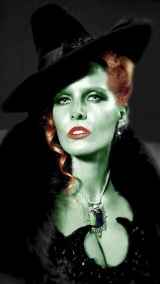
The show, which tells the story of fairy tale characters crossing over into our world through a magic curse and now residing in the town of Storybrooke, Maine, originally started by adapting the story of Snow White. In this instance, having the Evil Queen as a villain is necessary. However, the continuing pattern of using women villains, as well as how they are portrayed, are increasingly problematic. It seems that the writers go out of their way to either create new female villains – like Cora and Tamara – or bring in ones that are irrelevant to the traditional fairy tale approach – like Zelena and Cruella. Although having strong women characters on television shows is empowering, creating them as villains only allows the media to further the stereotypes of women’s negative traits, the sexualization of women in entertainment, and reduce the respect of women in power.
Negative Stereotypes
By portraying so many of their female characters as evil, Once Upon a Time dwells on the many negative stereotypes of women. Traits like vindictiveness and manipulation are especially prevalent in the female villains. As it turns out, each one of the female villains is out to avenge someone they lost. For example, Regina wants revenge on Snow White for inadvertently leading to the demise of Regina’s first love, Daniel. Another villain, Zelena, wants to go back in time to destroy the woman who forced Zelena’s mother to give her up at birth. This vindictiveness, and the willingness to sacrifice anything to achieve their revenge, makes them appear incapable of forgiveness, or rationality.
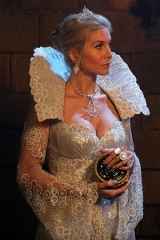
Manipulation is another negative characteristic of women that appears frequently in the villains on Once Upon a Time. Although almost all of the female villains have incredible magical powers, they can wreak just as much havoc using only their words. For example, after a traumatic incident in which Snow White kills a person in order to save her family, Regina convinces Snow White that she is evil after just one conversation and sends Snow White into a debilitating depression. Despite the female villains’ power of words, the most notable manipulative women are Cora and Ingrid. Cora can turn people into her henchmen by ripping out their heart and using it to control them, and Ingrid knows how to get into anyone’s head by using a magic mirror that makes people see the worst in themselves. Their methods are so underhanded, that the heroes often get roped along for an episode or two before finally realizing they have been tricked.
Interestingly, Peter Pan, the only male villain to receive his own half-season plot arc, is the only villain with no real motivation for being evil. Unlike the female heroes who are blindly fighting for vengeance, Pan simply is evil because he thinks it is fun. To Pan, everything is a big game, including his murderous plot to keep the magic in Neverland so that Pan can maintain his eternal youth. Similarly, because Pan has no one that he loves, it appears he has no weaknesses, and is one of the most powerful villains that the show has seen. Therefore, the vindictiveness which the women use to drive their plans, is actually quite trivial when it comes to being evil. By showing how powerful Pan is without any form of motivation or vindictiveness, it undermines the women who have been fighting so long for vengeance. For example, because Pan has nothing to hold him back, he establishes himself as even more powerful than Regina by taking away the person she cares about most.
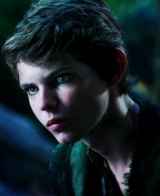
In addition to his lack of vindictiveness, Pan’s form of manipulation is decidedly different from the females as well. Pan maintains his control over the heroes much more overtly than the female villains. Unlike the female villains, where the manipulation is subtle and secretive, Pan simply kidnaps someone the heroes care about and hides him in Neverland. By having such glaring leverage over them, Pan is able to get the heroes to do whatever he wants. Although he tries to subtly manipulate his kidnapping victim, the way the female villains would have, he is much more unsuccessful than they would be. The fact that Pan cannot act as underhandedly as the females makes it appear their trademark, and furthers the idea that manipulation is predominantly a trait solely for women.
Sexualization
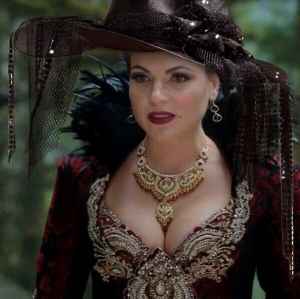
The female villains are sexualized, both in their costumes and in their behavior. All of the female villains with magic powers wear dresses cut to allow copious amounts of cleavage. In fact, there are entire sections of the fandom on Tumblr dedicated to the “Evil Cleavage” because it is such a glaringly obvious part of the show. Occasionally, the outfits can even be distracting and take away from a scene.
In addition to the occasionally ridiculous outfits, the behavior of the female villains leads to their sexualization as well. Regina, Cora, and Tamara all had affairs that got them into positions of power. Tamara’s affair was particularly drastic because she was using the man she was engaged to, in order to gain access to Storybrooke so she could destroy its magic. By using her femininity and physical attractiveness to get what she wants, it undermines her intellect and other characteristics that allow her to complete her mission.
The female villains’ promiscuity is so well known that not only do they use it to their advantage, but the men in the show do as well. While Zelena is holding a magical Storybrooke resident prisoner, he is almost able to escape by showing her affection and having a passionate moment with her. The fact that a character who is so scheming can be almost foiled by a little attraction and attention, invalidates her ability to come up with such a maniacal plan in the first place. Therefore, not only are the sexual desires of the female villains used deceitfully in order to gain power, but they are also portrayed as a source of weakness for these women as well.
Positions of Power
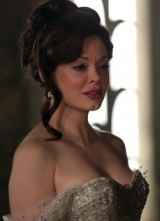
The continued use of female villains portrays women in power in a negative light. For starters, the fact that a majority of the female villains are queens – the Evil Queen, the Queen of Hearts, the Snow Queen, and the Queens of Darkness – sets up a direct comparison between women in power and villainy. The argument is furthered by the ways that these characters came into power. As previously mentioned, many of the female villains had affairs to get into their position. In order to succeed in these positions, these women had to become ruthless and heartless – some quite literally. Both Regina and Cora ripped out their own hearts in order to prevent it from making them vulnerable. However, the corrupt and manipulative ways of gaining power are not restricted to just the villains. The audience sees Snow White’s mother, Ava, break an engagement between Cora and Prince Leopold by telling Leopold one of Cora’s scandalous secrets, thereby earning the Prince’s affection for her own.
Not only do the female villains possess political power through their position as a queen of some sort, but they also possess magic powers. These magical powers, infinitely more important than their political power, were honed with the help of Rumpelstiltskin. Although Rumpelstiltskin does not have an entire plot arc where he is the major villain, he has been using dark magic for the entirety of the show. He has been known to change sides between good and evil solely in order to support whichever side will benefit him the most. Arguably the most powerful character on the show, Rumpelstiltskin has trained, or at the very least, aided, every single magical female villain throughout the show. Regina, Cora, and Zelena were all his students, Ingrid owes him for magical items that help her control her powers, and Ursula, Maleficent, and Cruella have all worked with Rumpelstiltskin in the past. Therefore, not only are women in power evil, but they owe their success to a man anyway. Despite their appearance of authority, Rumpelstiltskin still holds all the strings. He often remains several steps ahead of the villains, and negotiates with them to make sure that he will end up okay in the end, regardless of what happens to the other characters.
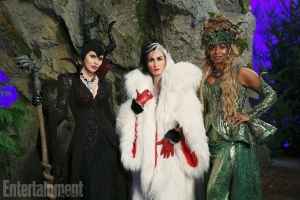
The Queens of Darkness, who will be the focal villains in the second half of season four, appear to be more of Rumpelstiltskin’s pawns. The final scene in the episode “Heroes and Villains”, which kicked off the show’s mid-season hiatus, showed Rumpelstiltskin going to Ursula for help and telling her that, if the Queens of Darkness agree to work with him, he will help the villains get the happy endings they desire. This begs the question, why did the writers choose three unconnected female villains, only to have them become Rumpelstiltskin’s henchmen? Although it is unknown at the moment what motivated the Queens of Darkness to become evil, the Queens of Darkness only further the argument the show seems to make that women in power are dangerous and villainous.
The Consequences
So, does having too many female villains undermine the show’s use of strong female characters? Although there are female heroes to attempt to balance the use of female villains, the female heroes are often too one-dimensional in order to be truly interesting. They fight solely for true love, and are good for the sake of being good, which often makes the villains more interesting than the heroes. The female villains are incredibly cunning and tactical, and are several steps ahead of the heroes at all times. The audience loves to watch as more of the villains’ plans and back-story are revealed. However, by making powerful women villains, the show is creating the idea that for a woman to be in a position of authority means she is, to an extent, evil. This is a common theme that we see in popular culture: women leaders in television are portrayed as icy, heartless, manipulative, and vindictive. Take a look at Jessica Pearson from Suits, Annalise Keating from How to Get Away with Murder, C.J. Cregg on The West Wing, Emily Thorne on Revenge, and Olivia Pope and Mellie Grant from Scandal just to name a few. This sets a dangerous precedent about assumptions of women in power today, and as an audience, society should demand more strong women characters they can respect, instead of love to hate.
What do you think? Leave a comment.
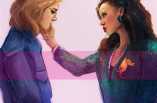
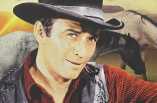
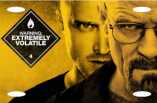
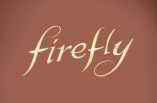
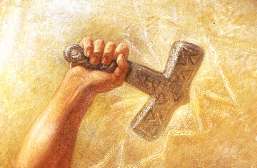
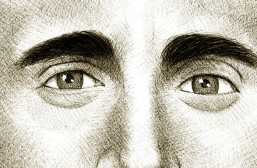
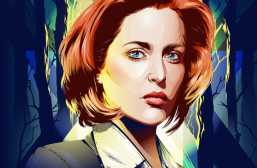
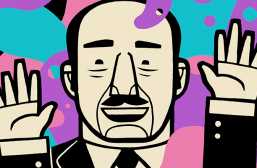
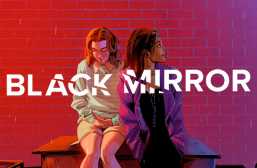
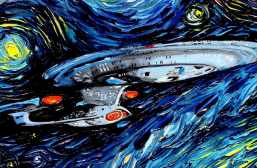
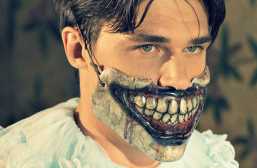
Great article. Although I’m only in the Pan arc I can certainly see how the show acn be problematic in its own right. This perspective never crossed my mind either given that it has a larger assortment of female characters than other popular tv shows.
I watched season 1 along time ago and was very bored by it.
Every season made me love the series more and more. I don’t say that the first season was the worst, objectively it was really good, the others were probably more flawed, but emotionally I still could get attached more and more asthe story went forward. Especially in season 3 and 4, but it started at the beginning of season 2.
For me season 3b was the favourite. I loved 4a and 3a as well.
I found myself bored at the first half of season 1 and by the end of season 1 I was hooked and couldn’t imagine not watching what happens next. Season 2 -4 aren’t better than Season 1 in my opinion only because the idea of everyone being cursed and not knowing who they are and Rumple and Regina secretly manipulating everyone was just SO GOOD but once everyone wakes up…it’s completely different. As far as character development, it kicks ass in my opinion during Season 2-4. Most of the characters have a major character growth and if you watch Season 4 without watching Season 2 and 3, you will find a huge leap and huge change in the way ALL character interact with each other and who is actually good and who is bad. New characters will come in and depending on what you like they may be badass or annoying to you. The good thing is that that the new characters don’t stay for too long, the show will always revolve around the main characters.
I say keep watching because every season brings out new qualities to ALL characters and you will be surprised by some of the things you’ll see.
Season 1 is in my opinion the best season.
I would really like to see Regina’s childhood and more of Henry’s childhood.
That could be a cool parallel episode (like they like to do sometimes). Regina raising Henry how she was raised and it’s terrible but sad because she’s trying and it’s the only way she knows. Plus his thoughts while growing up, and no one is doing so.
We Are Both had a similar parallel, with Regina remembering Cora and then letting Henry go. It was a big moment for her because before that she was following Cora’s footsteps (then she relapsed again towards the end of season two and then Henry got kidnapped).
I wouldn’t mind these flashbacks. I still want to know why Regina put Henry in therapy but I don’t know how practical they are, given Jared’s age. I think if we do get flashbacks to Henry and Regina prior to season one its only going to be when Henry is a baby.
Regina had put Henry into therapy, because he had found out about the curse and her role as “the Evil Queen” via the book that Snow gave him. Because of this, he began behaving in a hostile manner toward Regina. Because he was telling everyone about the curse, Regina decided to pass of his comments as delusional. Even Emma thought he was mentally unstable when he told her about the curse. But she chalked it up to Regina being a “bad mother”.
I thought the winter finale was the best episode of the season because it did focus on core characters and not the Frozen people.
Great article. I.think a large part of the reason that women are depicted in such a way is that much of the plot is based off of the Grimm Fairy Tales and Disney movies, which tend to be centered around positive and negative female monarchs like queens and princesses. I actually took a class on Fairy Tales (such a strange and awesome course) which framed the mindset of female villains using the time and idea of women being wicked and seductive.
I agree that this is harmful considering that the form of thinking that the Grimm used should not hold true in 2015
Isn’t it strange that these Grimm’s tales keep showing up in mainstream pop culture—and especially children’s media? I think the villainous-powerful-woman archetypes are so engrained into male-dominant art and literature because of a deep, unconscious, complex fear men have for their mothers. Twentieth Century trends of changing the “wicked mothers” into “wicked step-mothers” (ie. Hansel and Gretel, Rapunzel, Snow White, Cinderella, etc., etc.) is a thin veil for embedding these timeless, yet gynophobic, tales into our our fantasies.
(Sorry to get all psychoanalytic on you all.)
To add upon this, perhaps this popular trope is a manifestation of cultural fears regarding feminism. Women are increasingly taking power in all aspects of society; however, this hasn’t dispelled the patriarchal mentality that still prevails. Woman are accustomed to participating in male-oriented media and are capable of identifying with male characters, yet in mass media there still is a lack of female driven stories. This is where I think “Once Upon a Time” does the most damage. It presents a female-driven narrative that confines itself to prehistoric stereotypes and regresses to an age where “hysterical” was a medical condition. This does nothing to dispel myth and only builds upon those fears of women in power.
What is the real reason they killed Neal after building him up to be so important?
Great post but I think Season 5 will be the last season.
I also think next season will probably be the last. I can’t imagine networks care too much about how many loose ends a show has left to tie up when considering programming, but I think there’s too many open unknowns at this point to allow writers to write a clean ending in whatever amount of episodes they’ve got left for this season.
Plus, if the ratings continue to decline, then I think that their going in with the expectation that next season will be the last would allow them to plan appropriately.
This show is a better adaptation of classics than Disney movies….
I think some of the stories in the show are slightly better, meaning more entertaining. Like Snow White’s story. I like her being the princess turned bandit, then she finds Charming and has all those in between moments of despair, uncertainty, and finally has her happy ending. I like the way Snow’s story unfolds in the show, but it has taken a turn for the boring as of late. Rumpelstiltskin’s story in the show is amazing. So much better than the Grimm brothers one, even though I like that one too. I didn’t like the Ariel story in the show, didn’t like the Belle one. The Peter Pan one was more true to the original story of Peter Pan than Disney’s version, and I liked the twist Adam and Eddy pulled with it. Also what they started off doing with Hook was good, but putting him with Emma just ruined the character for me. They could have had them like each other but he should have stuck to his pirate ways, minus the multiple affairs with random women. So for the most part the show versus the Disney versions; some tip towards the show being better and others tip towards Disney. It’s a matter of opinion.
A really good piece. I like how you address this problem in TV shows and it’s a problem also because many people think this evilness or being a femme fatale is subversive when it’s more complicated and often more problematic.
Great article. It’s funny, the other day I saw a promo for “Agent Carter” and they were arguing that the network ABC is known for depicting strong female characters. But after reading your article, your article dampens their argument. Nice job!
This is a fantastic article! Great analysis and observations!
Great article. I have my ups and downs with this show. Some episodes make me lose interest, and others have me hooked for a couple weeks. I agree that the use of female villains is a bit wrong. Although Disney uses mainly female villains in their fairytales, they do have male villains that they can incorporate in the show.
A very interesting take on the show I might say, and I can certainly see how this interpretation would come about. I have been along on the Once Upon a Time ride ever since it started, and I can say that your view of the female villians is very accurate. I do agree with an earlier comment that many of the characters had back stories originating in Grimm novels, and considering the time period they were written in, the certain “stereotypes” given to women in power are to be expected. Kitsis and Horowitz are already constanting changing and developing the characters in as many interesting ways as they possibly can, and as viewers we have to remember that they have to keep certain elements of fairytale fiction within the show or else it would cease to be about the characters we know and love in the first place. However, writer’s integrity aside, when comparing the portrayal of women from fairytales to women in real life there are certain aspects of their character that can be used to spark conversations. Still, all avid Oncers and feminists should remember it is just fairytales and creative writing.
Fantastic discussion! I was definitely prompted to think about how modern television affects our perceptions of gender stereotypes, more analysis like yours should be written more often!
Love this article. I’ve never actually seen the show but I know enough about it to absolutely agree with all of this. I also think it’s interesting that only the women that are villains are so overtly sexualized; equating sex as evil, and the more modestly-dressed protagonists as the virgin-like ideal to aspire towards if women don’t want to be considered evil.
Star Trek: DS9 had one episode every season, where they did something horrible to Miles O’Brien. They apparently called them the “Miles Must Die” episodes. I have a sneaking suspicion Rumbelle (or really, specifically Belle, and then it just translates to Rumbelle) is OUAT’s Miles O’Brien.
Interesting article! Generally I quite enjoy sassy female villains, as I love that they offer a representation of women as powerful, rather than vulnerable. But I do see your points about the negativity associated with the power, and the unnecessary sexualisation. Perhaps it would be less of an issue if there was more of a balance between good and evil female characters? It’s a complex topic – great job!
[“For example, after a traumatic incident in which Snow White kills a person in order to save her family, Regina convinces Snow White that she is evil after just one conversation and sends Snow White into a debilitating depression.”]
THIS IS WRONG. Snow White had killed Cora for revenge. That was it. She had expressed her intention to seek revenge against Cora for the deaths of her mother and the family’s servant, Johanna in “The Queen Is Dead”. In “The Miller’s Daughter”, she got her revenge by cursing Cora’s heart and manipulating Regina into planting that cursed heart into her mother. Snow White did not do all of this to save the town or her family. She did it to achieve revenge with malice aforethought.
So that means, you had another “villainous” female character to discuss. Or a female character who had committed a villainous act. By the way, Snow tried to murder Mulan in a fit of rage in Season 2’s “Into the Deep”. Princess Aurora stopped her.
Brilliant article. I wrote a similar one on another forum looking at the adaptions of fairytales across film and TV in general, asking why they are so popular. This was my conclusion:
“…the worrying thing, for me, is way the women of the tale are still divided, rather than united. The Queen does not celebrate the fact that Snow White is both strong and beautiful. She fears it. It is unfortunate that we can still recognise our society in fairytales such as this and because of this, fairytales will remain for many years.”
Great article tackling a very complex and nuanced topic. While I do agree that the female villains have been sexualized, some male villains, Hook comes to mind, have also been sexualized. I applaud the show runners for showing a variety of females in different roles however, the representation of women in television is a work in progress and it’s clear the Once Upon a Time has been a testing ground.
I am a huge fan of this show even though I think the show has gone a little down hill as they struggle to integrate new characters into one world that is originally multiple worlds. I loved your article though and I agree with all of it, though I will point out a few things I’ve noticed.
I agree it’s problematic that portraying so many women as villains is problematic, but I would argue that many of the heroes are also women. And while the cast of villains is constantly changing, making room for additions of more women, the cast of heroes stays the same.
Further, I would add that though many of the women are manipulative, a negative stereotype of women that should not exist, Rumplestiltskin is the master manipulator. He has a hand in manipulating nearly every person in the show.
Lastly, I don’t think that the female villains having maternal or other love for people get in their way is a problem. I think the larger problem is that Peter Pan does not have that. It plays on the negative stereotype of men not having that paternal love or having love of any other kind play an important role in their lives.
I’ve always found Regina to be a well-rounded and interesting character. She starts as a villain and slowly moves towards the hero role…without losing all of her edges if you will. I don’t necessarily think that the right idea is to eliminate female characters that exhibit these bad or negative traits…maybe we should just be pushing for more well-rounded, complex characters of both sexes.
Your careful and detailed analysis reveals exactly what is wrong with the portrayal of women, not only in film and tv, but also within public conversation these days. Although I haven’t seen Once Upon a Time, what you describe rings true for many other works and situations.
You mention Shonda Rhime’s How to get away with murder, and while I haven’t seen that show yet either, I had to think of this article that I came across last year: http://www.huffingtonpost.com/2014/09/20/shonda-rhimes-ny-times_n_5854284.html
There are problematic issues of racial prejudice involved in this conversation, but it also points towards the problem that a strong, powerful woman will almost always be perceived as intimidating – unless she has some characteristic built in to make her seem less so – and that that again is perceived as a bad thing in the public eye.
I long for there to be strong female characters who still aren’t perfect, and don’t have to be, which aren’t written and perceived as weak or evil, but human.
I think you might enjoy Once Upon a Time. Contrary to what this article points out, there are several strong and human female characters on the show. They have turned disney’s princesses into heroes and positive role models. You should give it a try! 😀
Great article! Film and TV writers should be reading this.
Although I just want to point out that our female heroes in Once Upon a Time are in powerful, authoritative positions (Emma the sheriff and Snow White the new mayor). It’s just not as emphasized and not relevant to the magical storytelling. We look at Emma and root for her to use and control her powers. We look at Snow White and see a former princess and new mother trying to find a new niche in the same community she’s been with.
I think we all should start seeing popular products the way you do, with a critical eye. That way we can always be aware and ready to reject all of those contents that somehow try to impose on ourselves. Congratulations for what you are trying to do here!
Nevertheless, I disagree with some of the ideas you have exposed in the article.
Female heroes:
First of all, (and I think most of the Oncers around here will agree), the female heroes are all but one-dimensional. The main character in Once Upon a Time is a woman with an extremely long and interesting back up story full of hard decisions, experiences and risk taking moments. She is a survivor and even though they constantly refer to her as pure of heart, she has also made bad decisions along her life.
The second most important character in the show is Regina (AKA The evil Queen), who is no longer a villain, but a hero. She is extremely multidimensional and pretty human. Not male or female character has been currently developed within the show as much as her (or Emma, of course)
The third female hero is Snow white. All of her back up story is related to saving people from the evil queen. As you correctly pointed out, every villain is in debt with Rumple, but most of the heroes and good guys are in debt with Snow white, so one of the most influential and a positive figures in the whole show is a woman, a good woman who has made mistakes, who has been weak at times, but very strong at others. She is not the Disney princess we are all used to, she is an empowered female who is currently in charge of the town.
Zelena, Ingrid, Cora and the Queens of Darkness have had strong back up stories, but never as strong as the ones Regina, Emma and Snow have had (and for several seasons, not just for the single one villains usually have)
Male villains
Now, about the Peter Pan thing… he was not evil just because he wanted to be evil; he wanted to stay young and powerful forever. The whole half season was about that.
Once upon a time portrays women in power as manipulative? Not just women. Men villains are the most manipulative owns. First, there’s Pan (again) whose main tactic is to persuade people into becoming evil. Then there’s the most manipulative character of them all: Rumple, who has tricked, betrayed and changed people all along the show. And for the first three seasons of the show he was looking for vindictiveness, it was actually his desire to vindicate himself what made him a villain on the first please, and then a hero, and then a villain again.
Female villains are not capable of forgiveness:
Regina forgave. Cora changed at the end. Ingrid forgave and changed at the end.
Sexualization of female villains:
Totally agree, except that some of the male villains have been sexualized too, (and some of the male heroes). Pinocchio, the huntsman (who was Regina’s boy toy), Charming and of course Hook, who has remained on the show mainly because of his sex appeal (ask the Oncers).
And I truly believe that the Zelena part you are referring to was not about sex, it was about being loved, something similar has happened to Hook, Emma, Rumple and Regina during the series.
In conclusion:
It is true that most of the villains have been women, it is true that they have been sexualized and portrayed as manipulative, and it is true that most of them have been controlled by a man, but the thing is that the most manipulative villains have been men and not women, the most sexualized character on the show is a man not a woman; and some men have also been controlled by a woman (Regina kept hearts of men in order to control them).
By the other hand, Snow White is a big positive female hero who has been influential to practically every “good” character, even equally influential to Rumple (with the villains).
I think we agree on the idea of Once upon a time being a show about empowered women. But not just evil women, this show has changed the whole saved-by-the-man arc we were used to, here the main characters are women (villains or not), most of the heroes are women, the most intelligent characters are women (Belle), the strongest fighters are women (Mulan).
I think this show (which is not completely innocent), is not as harmful to women’s image as you point out. It’s just that the article ignores some contexts and elements (unintentionally) to favor the theory of negative stereotypes, besides, even though this is not a feminist show, there are a some dialogs, characters and scenes that seem to pursuit a political positioning very similar to the one held by feminist and queer theorists (you can find examples of these in the Sorcerers arc, Mulan’s arc, and of course, Snows back up story)
So, I guess it has equally positive and negative portrayals of female (and male) characters.
Thank You Albert…All Oncers owe you a debt…ur reply’s the only one thing Oncers will look for after reading the non-sense article talking about OUAT and villains and women…. Once Upon A Time is the best series in the world!!! And also without a doubt, “REGINA’s the best!”!!! 🙂
oh paleeez, darling. Stop talking nonsense about OUAT…it’s the best…it’s simply the best…and yes, Albert’s got it all correct!!!
Excellent!!
I stopped watching OUaT a while back, partly because of this very thing. The fact that all the Queens actually owed their powers (or at least their skill) to Rumplestiltskin became increasingly problematic to me, particularly since there has never been a similar line of male characters who owe him such credit. Do male magic-users not need training? Or do men have such inherent power that they don’t need to use magic? (Rumple obviously came to it b/c of a lack of personal power and autonomy.) The powers the female characters have also tend to be erratic and inconsistently portrayed — remember when Emma had the “superpower” of always being able to tell when someone was lying?
There’s a lot good to be said about this show, but I became more and more uncomfortable watching it, and finally bailed.
Thanks for the analysis; I enjoyed this article a lot!
‘By portraying so many of their female characters as evil, Once Upon a Time dwells on the many negative stereotypes of women. Traits like vindictiveness and manipulation are especially prevalent in the female villains.’
I do agree on the general negative potrayal of women in the media, but as far as’Once Upon A Time’is concerned this programme does have it’s roots in The Grimm Fairytales which are better understood if we realise that the ‘conventional flat characters’ in them , psychologically are characters with personality disorders. Snow White – the narcissist. Cinderella and Rapunzel are tales of narcissistic mothers who abuse their daughters.
Given the social pressure for individuals and adult children to evangelise mothers eg with mothers day and associate sociopathy with men, with a slight predisposition to believing that women are incapable of abuse, I think its healthy so to speak, loosely to keep a balance as far as female representation goes, because female ‘villains’ do unfortunately exist.
Good article, but you failed to examine the villainy of Rumpelstiltskin, who seemed to resort to manipulation like many of the female villains.
Rumpelstiltskin and Jafar are the only two male villains in the “ONCE UPON A TIME” universe that are magic users. The show never showed Rumpelstiltskin being trained to use magic. But “ONCE UPON A TIME IN WONDERLAND” showed Jafar being trained by a sorceress named Amara, the future mother-in-law of Alice.
Very interesting article. I agree the “good” female characters are so one sided that you get bored with them. I feel this show is tied in knots right now.
That all may be true, from certain point of view, but the good main characters are women, too. The more powerful one is a woman. The men are companions, secondary characters. The “baddest of them all” is a man, unrepentant. An even the bad girls are all about “girl power” and most of them end up repentant and reformed. And Regina turns good out of sheer will power. An then you have this dialog between Regina and Emma:
(Emma): Your happiness is still a possibility. Your first step is going after the man you love.
(Regina): My happy ending isn’t a man.
(Emma): Of course not. But love is a part of all happiness, and you have to be open to that.
If that is not a good message for women…
I think you make some good points about the villains and women, but I also feel like I would be fine with female villains if they weren’t redeemed, or softened in some way. Regina, in particular, keeps jumping back and forth between villain and hero so it’s never clear what side she’s on and it’s not clear if the writers know what side she’s on. Cora’s actions were handwaved to her ripping her heart out and once it was put back in her chest, it seemed to imply that she could become good again, or at least a certain version of good. Zelena’s arc is still ongoing, but even she got a softer edit because of the backstory given to her character.
Overall, the show definitely softened many of the female villains and gave them rich backstories but I enjoyed Peter Pan’s journey as a villain because he was just evil with very little reason as to why, and he was never redeemed. I would like more of this type of villain on the show and I would like to give that to a female villain.
I think there is a problem of the show’s female villains, but not in the same way shown in the article. All of these female villains want something different in their lot in life, but the good guys keep telling them to accept what life has given them. For the Evil Queen she is told to accept her loveless marriage and to back down and let Snow rule soley based on blood. She is supposed to stay in her place.
Cora’s whole goal is to socially climb to power, but she is also told she would have been happier if she kept her first born child and stayed poor instead of rising above the rulers who are clearly terrible people. Then we have her daughter Zelena who has had a miserable life and is told to accept being treated lesser by her family. And now she is trapped in a cell and doomed to never know her own child. And as an audience we are supposed to be okay with this.
Then Ursula is a villain cause she didn’t want to be controlled by men and we are supposed to be happy when she concedes to men, especially her father when he gives her voice back (and there is apparently know way she can reclaim this for herself) and we are supposed to be happy with her going back to her prison with him, just to sing for him. Stuff like this I find problematic.
Sorry for the spelling errors. There are some rookie spelling issues in there.
The author clearly knows the source material and brings up very compelling arguments within the article. While the author has cited many issues and brought up specific moments to back their point in which I do agree with, I found some areas to be problematic in that they were to too easily defined neglecting other arguments for those aspects. What I mean by this is for example the argument that the female villains are whole heartily villains and thus exhibit only negative traits ( manipulation and vindictive nature). It almost implies that all these characters are. One can argue that they are not just villains with these traits. Some such as Regina or even the Snow queen whose choices stem from vengeance and vindictiveness results in making them appear human. This is more compelling to watch than someone who is wholly evil and spitefully acting as it makes the character relatable to the audience in some occasions. I also urge to consider that these early traits (while I agree shouldn’t always be used) serve a purpose to allow room for not only character development later on, but creates space for the characters to interact with the other themes such as redemption. Its problematic to say all the women who first appear as villains are villains and that they are classified into certain stereotypes when the show’s intentions usually steers them away from these stereotypes over time to create well rounded characters.
I’m watching the series on Netflix and slowly working my way through it. I’m almost at the halfway point of season 4 (Ingrid just died.)
I’d love to read your character analysis of the individual villains. In particular, is it just me, or is Ingrid completely insane and unfit for being a mom/big sister/aunt to Emma and Elsa?
Btw, I’m a 23 year old guy and huge fan of video games. I mention this because video games typically have a predominantly male and extremely sexist community and I find this show fascinating. I’m simultaneously awed by these women and more than a little creeped out by how manipulative some of them are. It’s odd because none of them are really that evil. Even Regina, the worst thing she ever did was slaughter a village. Whoop-de-doo.
Once Upon A Time has always been problematic, and its creators rely on the excuse that it is based in fairytales and folklore that they are modernising. I don’t think they understand that in order to modernise something, you have to…well…modernise it. Perhaps in order to avoid being called anti-feminist, the writers believed that they must create “strong female characters” which are so often absent in classic fairytales, and it seems the only way they can think to do this is by giving them positions of power and making them cold, ruthless and therefore villains.
There’s a lot wrong with this show, and as much as it could be brushed off as something just a bit fun and quirky for young audiences, the themes within are certainly not always child-friendly, and even if it was just for family viewing, all the more reason to be conveying a better message about “strong women”. This show has a glaring absence of LGBT representation, and the people of colour in the cast almost always end up miserable, dead, or evil. The creators have been given numerous opportunities to change these things about their show and yet are clear on the direction they wish to take it in. I say that’s fair; it’s their show, but the viewing figures will continue to go down unless they do something, and there’s only so much of Lana Parrilla that you can show before you run out of ideas.
Are you aware of Regina becoming a hero and the key fact that the Savior is a woman? I mean, come on! The show is full of strong female characters.
I so agree with all of this, and I’m also glad I’m not the only one who sits around regularly thinking about gender dynamics on this insane and ridiculous show. The ratio of female villains to male villains is really skewed here and I think that’s a problem, both for ethical reasons and for the structure and form of the show itself.
And yet, how can I argue with a show that actively provides such strong, numerous, and varied roles for women? Despite the villainy, the female characters on Once Upon a Time are considerably better developed and fleshed out than almost all of the male characters (Rumplestiltskin excepted) and it’s, I think, the only show I can name off the top of my head with more female cast members than male ones. I know all of this doesn’t excuse the negative characterizations of women the show too often presents, but it is interesting to me that this immensely popular show has enough female characters that we can even have this debate to begin with.
Who is the author of this article?
Could you write about the carácter Zelena and motherhood, i feel angry of how they took apart her daughter and the whole thing about maternity.
I honestly had never thought about OUAT’s villainous women that way, so kudos for bringing new thoughts to the table. However, I think the point you made about many of the “evil” women being queens is a little off-base — mostly because, if they didn’t hold some position of power, they wouldn’t be important enough to the story to be in the show. Who cares if a peasant is evil? They have no way to wield their power over enough people for “heroes” to take notice. UNLESS they have magic. Having dark magic, though, effectively means said peasant will come into a position of power. Evil seeks power naturally, even if not purposefully, because being evil means you have people countering you all the time, and to continue in your ways (i.e. survive), evil has to counter back. Dominance necessarily leads to power.
But you do have a point about the high percentage of female villains — it’s almost like the writers were so scared to be too “traditional” that they went overboard being non-traditional.
I have to agree with your point about the female heroes being too one-sided to really be interesting. I’m probably alone in this, but Snow White drives me nuts. Her eternal quest for nothing more than true love and fighting for the greater good no matter the nonsense required to make it happen is one of the many reasons why I find her an annoyance on the show more than a contribution.
Lots of good points, but I find it interesting that you left out Captain Hook. He’s more of a henchman than a stand-alone villain much of the time, but like many villains he was motivated by vindictive revenge. Granted, he’s not been as successful at manipulation, as many of the villains end up one step of him.
To me, the main issue might not be the female villains, but rather the lack of female heroes to effectively counterbalance them. This could explain why the writers have pushed to redeem Regina, so we can have two magical heroines and not just one in Emma. It would be good to see women with power in a more positive light, and to see the female heroes drawn more complexly.
Good points on all counts. I especially liked the argument that because Rumplestiltskin has interacted with all the female villains, these supposedly powerful women still owe their successes to a man, if in a roundabout way. It goes nicely with the argument that because male villains like Pan do not use sexuality or manipulation to get what they want, the female villains’ thirst for vengeance is undermined.
That’s not to say I haven’t enjoyed OUAT’s female villains. I loved Ingrid, but mostly because her real motivation was finding love and a family. Say what you want about stereotypes, but you don’t see that with many villains. I also love Regina, but on second thought, that’s mostly because she’s been allowed to show her light and dark sides. She has arguably received more character development than any villain, perhaps any character period, on the show. Unlike Rumple, she doesn’t switch sides strictly for her benefit. She legitimately struggles to make a positive change and stick to it, which I really root for and think we all can.
However, these villains alone don’t save OUAT’s females from stereotyping and staleness. For one thing, can we please get a female villain whose primary motivation isn’t revenge or jealousy? I’d be interested to see what would happen, for example, if OUAT did The Princess and the Frog, but instead of a Shadow Man, Dr. Facilier was a Shadow Woman. Her motivation could be controlling Storybrooke’s souls, a thirst she developed after, perhaps, falling from grace in a religious community. (Shades of Frollo)?
I’m sorry but your wrong. The female villains mostly become reformed while the true villain is Rumple…. a man. If anything this show vilified and snubs all the male leads as incompetent love sick dogs.
About the female manipulation, the fact that they’re capable of something like that shows that they posses intelligence. To be able to create such intricate long plans, to held all that power and also to acquire it, all of those actions require them to be smart. Then in regard of the sexualization of women, you need to consider that they are in medieval times and that showing skin and dressing as they desire to its a power move. And yes, maybe they do use they’re bodies and beauty as a way of manipulation, but they’re in a world so full of kings and dark ones, all males. If you really think about it Cruella didn’t live in the enchanted forest, Ursula wasn’t the queen, her dad was, Maleficent wasn’t really a queen since she didn’t had a reign, and the only way for a women to obtain power, was to marry as Cora or Regina did, even Zelena had to kill the wizard who was in charge. So you can’t really blame them for using all the resources they can when without they magic all they had left was their bodies and intellect, which can also be seen as bad. When you think about it, everything a women would do would be seen as bad.